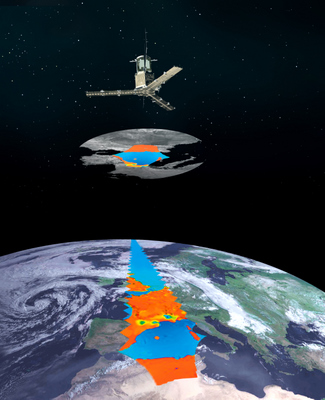Europe will begin launching this March the first in a series of satellites that will investigate various aspects related to global warming

The SMOS satellite (acronyms for: Soil Moisture and Ocean Salinity) has been approved for launch next month, following almost a year of waiting while the mission awaited approval to set off from a private launch company.
The satellite, which was planned to be launched in 2008, has been stored at the facilities of the Thales Alenia company in Cannes, France since last May, waiting for approval to launch from the Plastsk Cosmodrome north of Moscow. If all goes as planned, the spacecraft will be launched between July and October. This is the second mission of the European Space Agency in a series of six satellites designed to observe the Earth from space and increase our understanding of climate change. The first satellite in the series to study the Gravitational Field and Ocean Currents (GOCE) is scheduled for launch on March 16.
During a planned lifetime of about 20 months, GOCE will map the variations in the gravitational field - data from which precise measurements of ocean currents and changes in sea level, two factors affected by climate change, can be derived.
Complementing these measurements, SMOS will orbit the Earth in a low orbit about 750 kilometers above the Earth's surface and will be the first satellite designed to map soil moisture and ocean salinity. The salinity in the oceans affects the ocean currents that drive the global climate. Among other applications, understanding the salinity and temperature of the oceans will lead to an easier prediction of the areas where hurricanes will strengthen. A specialized radiometer developed for the mission will be able to observe both soil moisture and ocean salinity by taking pictures of microwave emission at a frequency of 1.4 gigahertz (L-band). SMOS will for the first time carry a two-dimensional interferometric radiometer that will be launched into polar orbit. The SMOS mission is designed to continue for three years.
The other satellites planned in the series are:
- (ADM-Aeolus (Atmospheric Dynamics Mission), which will examine the dynamics of the Earth's atmosphere, and which is planned for launch in 2010. The satellite will collect data about the global wind profile to improve weather forecasting.
- * CryoSat 2 (CryoSat-2,). This mission is scheduled for launch in late 2009, and will detect changes in land and sea ice cover thickness to better understand the relationship between ice and global warming. Creosat 2 will replace the Creosate lost during launch In 2005.
- Swarm, scheduled for launch in 2010, is a constellation of three satellites that will study the dynamics of the magnetic field to gain new insights into the Earth's systems by studying the interior of the Earth and the environment within it.
- (EarthCARE (Earth Clouds Aerosols and Radiation Explorer) which will be launched in 2013, is a major joint mission by the European Space Agency and the Japanese Space Agency with the aim of improving the understanding of the Earth's radioactive balance in numerical and climate models used for weather forecasting.
